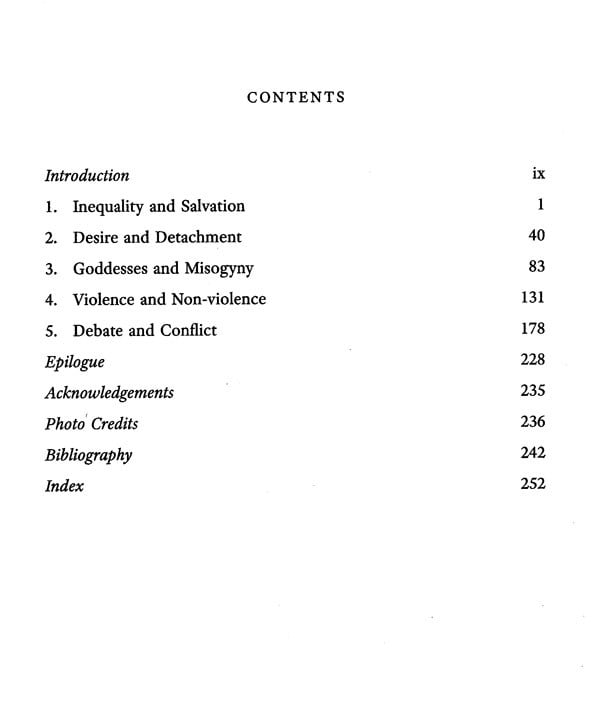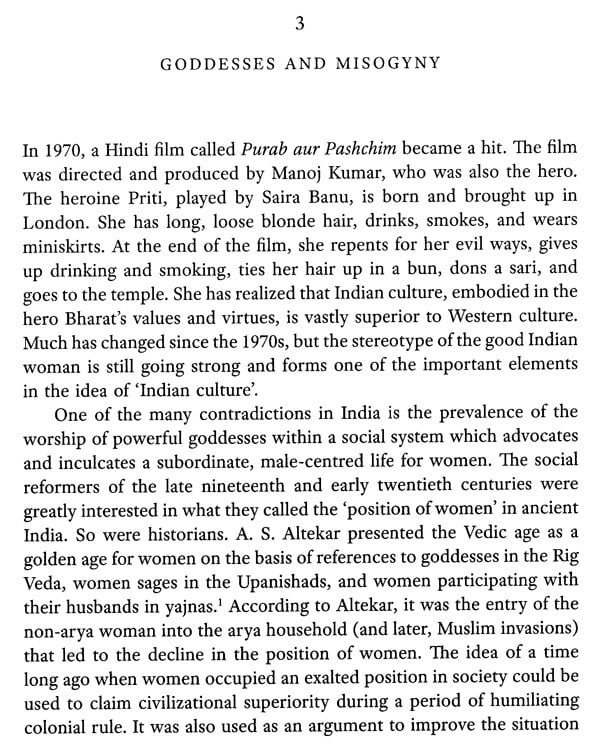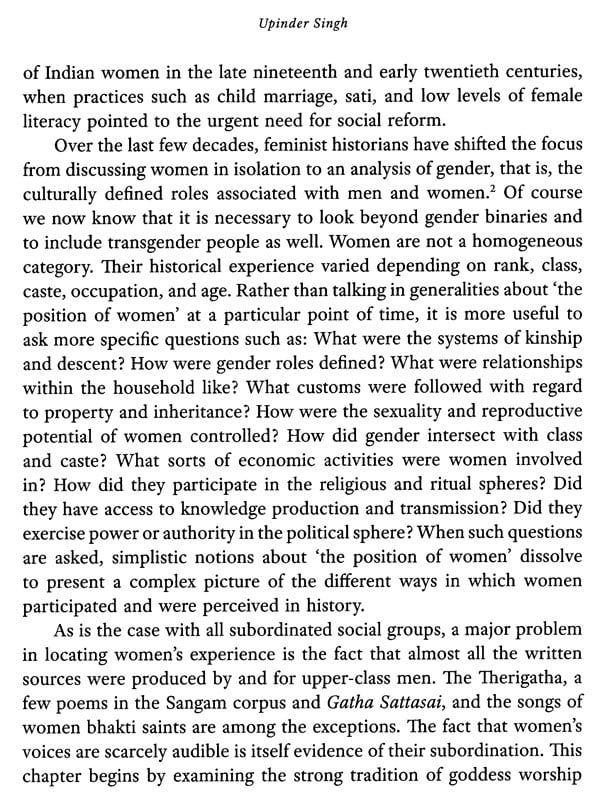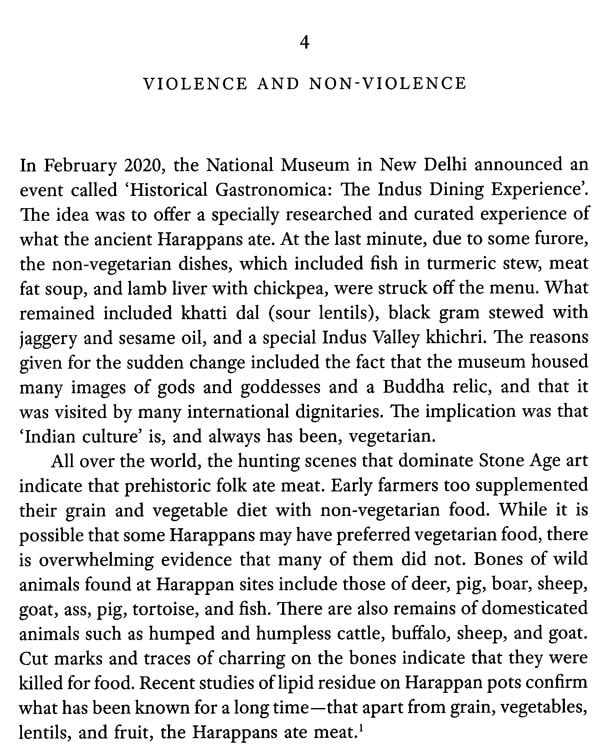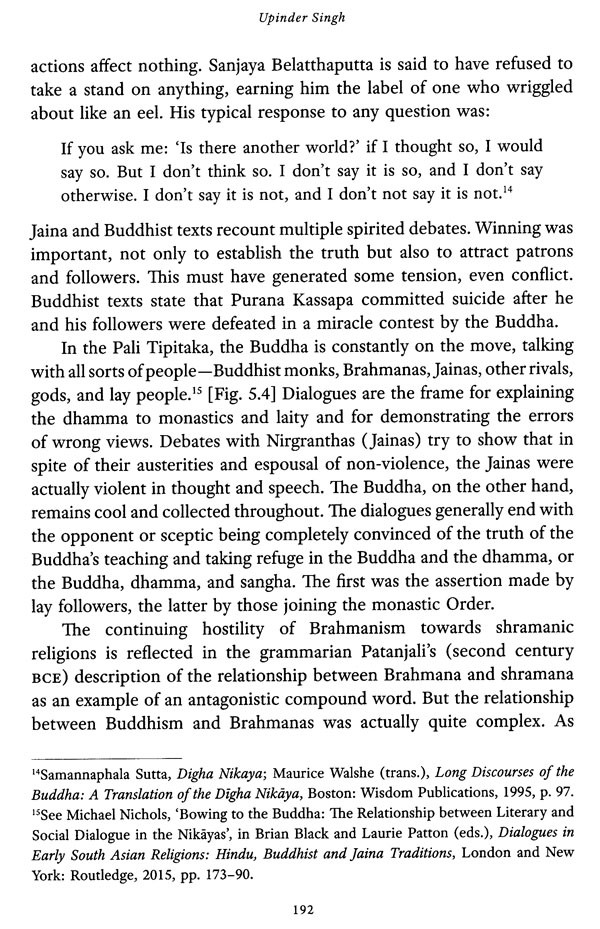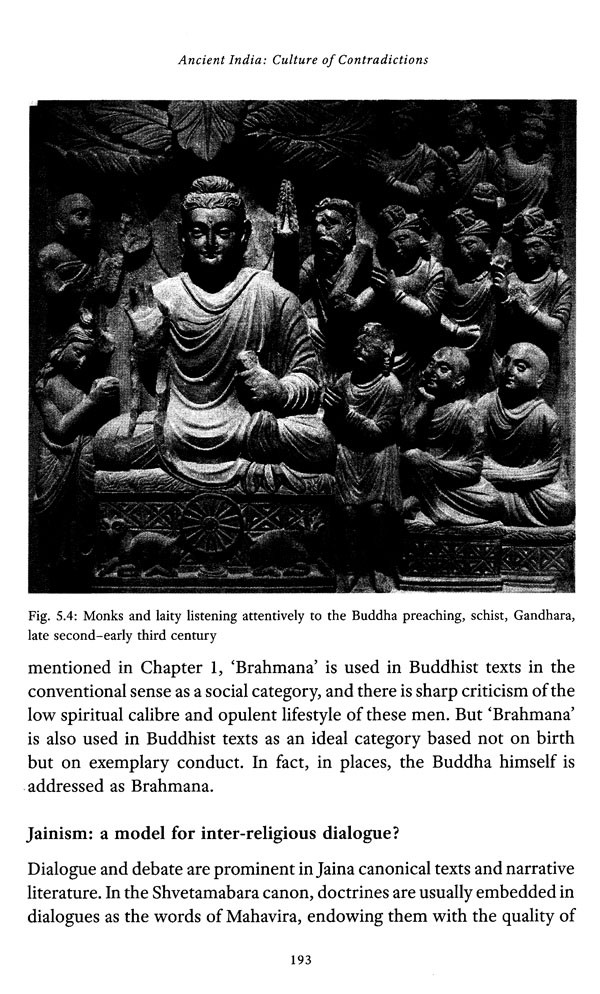
Ancient India- Culture of Contradictions
Book Specification
| Item Code: | NCZ190 |
| Author: | Upinder Singh |
| Publisher: | Aleph Book Company |
| Language: | English |
| Edition: | 2021 |
| ISBN: | 9789390652617 |
| Pages: | 263 (Throughout B/W Illustrations) |
| Cover: | Paper Back |
| Other Details | 9.50 X 6.00 inches |
| Weight | 450 gm |
Book Description
In Ancient India: Culture of Contradictions, one of India’s most distinguished historians takes readers on an exhilarating voyage of discovery into the distant past.
Upinder Singh urges us to abandon simplistic stereotypes and instead think of ancient India in terms of the coexistence of five powerful contradictions-between social inequality and promises of universal salvation, the valorization of desire and detachment, goddess worship and misogyny, violence and non-violence, and religious debate and conflict. She does so using a vast array of sources including religious and philosophical texts, epics, poetry, plays, technical treatises, satire, biographies, and inscriptions, as well as the material and aesthetic evidence of archaeology and art from sites across the subcontinent. Singh’s scholarly but highly accessible style, clear explanation, and balanced interpretations offer an understanding of the historian’s craft and unravel the many threads of what we think of as ancient Indian culture. This is not a dead or forgotten past but one invoked in different contexts even today. Further, in spite of enormous historical changes over the centuries, the contradictions discussed here still remain.
Beautifully written, deeply true, and profusely illustrated with masterpieces of ancient, medieval, and modern art, the book brings to life the rich complexity of ancient India and its connections with the present in a vivid and compelling manner.
UPINDER SINGH is Professor of History at Ashoka University. Her interests range over ancient Indian history and archaeology, the history of ideas, and India's connections with the wider world. She is the author of Kings, Brahmanas, and Temples in Orissa: An Epigraphic Study (AD 300-1147); Ancient Delhi; The Discovery of Ancient India: Early Archaeologists and the Beginnings of Archaeology; A History of Ancient and Early Medieval India: From the Stone Age to the Twelfth Century; The Idea of Ancient India: Essays on Religion, Politics, and Archaeology; and Political Violence in Ancient India. She has edited Delhi: Ancient History; Rethinking Early Medieval India; and The World of India's First Archaeologist: Letters from Alexander Cunningham to J. D. M Beglar; and coedited Ancient India: New Research; Asian Encounters: Exploring Connected Histories; and Buddhism in Asia: Revival and Reinvention.
The existential question, 'Who am I?' is as fundamental as the social question, 'Who are we?' The first demands personal introspection and philosophical reflection. The second leads us to genetics and history. Scientific evidence shows that the world's entire population is ultimately descended from African ancestors who moved into Asia thousands of years ago and gradually spread across the earth. In recent years, a burgeoning personal genome industry urges us to locate our more recent ancestry, for a price. Laboratory tests now track biological lineages across generations. But cultural lineages are much more complex. No DNA test can explain them.
This book was conceived in the BC (Before Covid) era, while I was designing a course on 'Indian Civilizations' in Ashoka University. The prospect was daunting. How could I approach such a grand theme without being atrociously superficial, selective, and simplistic? Was it possible to convey anything meaningful about something so momentous within the span of a mere thirteen weeks? Was my course not doomed to failure even before it began? Instead of despairing, I decided to be upfront about the difficulties and to structure the course around key contradictions in ideas and attitudes in early Indian history (my own area of expertise), many of which are still discernible in India today. This book developed out of that initial impulse and was written during the ongoing Covid-19 crisis. There is nothing like a global pandemic to remind us of our mortality, to provide an incentive to complete unfinished business, and to underscore the oneness of humanity. Unfortunately, the continuing conflict and strife in India, and indeed across the world, shows that even a pandemic is not enough to replace the divides between countries and communities with the realization that we are all humans, alike not only in our susceptibility to microorganisms, but in more profound ways as well.
The great deal of popular interest in ancient India these days and the fact that the subject is both a political mine and minefield, make it more urgent than ever before to move discussions out of universities and academic journals into the wider world. Opinions are not the same as history. The discipline of history requires a careful examination of primary sources, the use of reason, rigorous analysis, and a conscious attempt at objectivity. For far too long, most Indian historians have chosen to magisterially speak from the pulpit, usually to other historians, rarely to ordinary people. The misconceptions and misinformation circulating at the popular level about history are a reflection of historians' refusal (or inability) to communicate with a larger audience. Now, with the realization that this is a problem that must be addressed, there is a sudden spurt in books written by historians for 'normal people'. But old habits die hard. Indian historians have routinely framed their debates in terms of 'left' versus 'right', both sides selectively citing evidence to fit their predetermined positions. For several decades, left historians ruled Indian academia and had the last word, one that could be contradicted or questioned only at one's peril. Today, the pendulum has swung to the other extreme, with the right stirring the communal cauldron and producing its hyper-nationalist brand of history. The flagrant politicization of history seems to have reinforced already-held beliefs and has done little to promote open-minded enquiry. It has also led to popular suspicion about the credentials and agendas of the discipline of history itself. The feelings of belonging and alienation that history can arouse make it highly susceptible to manipulation; this susceptibility makes it all the more necessary to explain historical methods to non-historians.
Many misperceptions about ancient India arise from a lack of understanding of the primary sources which historians use to write their histories. These varied sources are the filter through which the past reveals itself; they include texts, archaeological remains, inscriptions, and coins, all of which need to be carefully contextualized and analysed. Ancient Indian texts were written in languages such as Sanskrit, Pali, Prakrit, Apabhramsha, Tamil, Kannada, and Telugu. Many were composed by multiple authors over long periods of time. The dates of many texts, including the Rig Veda, Ramayana, Mahabharata, Tipitaka, Jaina canonical texts, and Arthashastra have been debated for decades, but it is clear that their composition stretched across several centuries. For instance, the Mahabharata was composed between c. 400 BCE and 400 CE.2 The very idea of a text evolving, growing, and changing over eight centuries is mind-boggling. Scholars have tried to reconstruct the original content of such texts by comparing their manuscripts to create critical editions, which are believed to represent their original core.
Because many texts contain several chronological layers, they may speak in different voices and represent different points of view. The authors are often anonymous, but their social background and perspective can be ascertained from the content of their work. So, instead of simplistically and selectively plucking out statements, texts have to be read carefully, keeping in mind their compositional history, historical context, genre, authorial perspective, and intended audience. Many works are normative or prescriptive-that is they lay down the ideal situation according to their authors' point of view. Many contain inconsistent and contradictory statements. No text is a simple reflection of the realities of its time; it is a complex representation of those realities.
Throughout history, in all cultures, in all parts of the world, subordinated and marginalized social groups have been deliberately deprived of opportunities to participate in the production and dissemination of knowledge. Hence, ancient texts largely reflect the perspectives and ideas of political, social, or religious elites. Almost all of them were written by upper-class men for other upper-class men. Some, Upinder Singh for instance, the Puranas, Mahabharata, Ramayana, and the hagiographies of the Buddha, Mahavira, and religious saints, reflect a historical consciousness-that is a sense of the past and an attempt to preserve certain aspects of the past that were considered valuable. These traditional histories are, of course, different from modern historical research. It is possible to tease out hidden meanings from texts by reading them against the grain and supplementing their testimony with other sources.
**Contents and Sample Pages**
